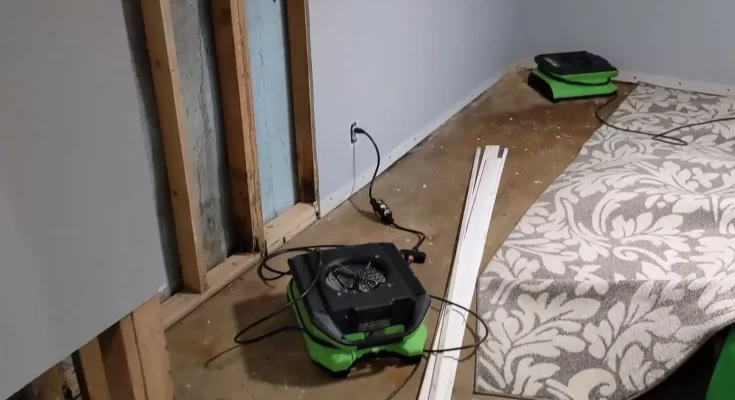Imagine you’ve just faced a major basement flood, and you’re standing knee-deep in water, wondering where to start. You’re not alone, and there are proven strategies that others have successfully employed to navigate this overwhelming situation. From innovative waterproofing solutions to restoring historic homes with modern resilience, these case studies offer insights into how homeowners have effectively managed and even prevented future floods. Whether it’s a DIY approach or professional intervention, the stories of these recoveries might just hold the key to safeguarding your own home. But what’s the secret behind their success?
Overcoming a Major Flood
When faced with a major flood, it’s crucial to act quickly to minimize damage and start the recovery process. First, make sure your safety by turning off electricity and gas to prevent any hazards. If the water is still rising, move to higher ground immediately and wait for the water to subside.
Once it’s safe, assess the situation. Document the damage with photos and videos for insurance purposes. Don’t forget to wear protective gear like gloves and boots to protect against contaminated water.
Next, begin removing the water as soon as possible. Use a sump pump or wet/dry vacuum to extract standing water. Open windows and doors to encourage airflow and help with drying. Remove soaked carpets, furniture, and other damaged items to prevent mold growth. Don’t hesitate to call professional services if necessary to assist with water extraction and drying.
Afterward, clean and disinfect all affected areas to eliminate bacteria and mold spores. Use a mixture of water and bleach to sanitize surfaces. Finally, contact your insurance company to file a claim, providing all the necessary documentation. Acting swiftly and methodically can help restore your basement and bring life back to normal.
Innovative Waterproofing Solutions
After managing the immediate aftermath of a basement flood, it’s wise to contemplate how you can prevent future incidents. One effective approach is to explore innovative waterproofing solutions.
Start by evaluating your basement’s current vulnerabilities. Identifying areas where water might seep in allows you to address issues directly.
Consider installing a sump pump, which actively removes water from your basement. These systems can be equipped with battery backups to guarantee functionality during power outages.
You might also explore interior drainage systems, which redirect water from your basement to a sump pump, keeping your space dry.
Don’t overlook the importance of sealing cracks in your foundation. Use waterproof sealants and coatings that create a barrier against moisture. Some advanced sealants even expand upon contact with water, filling gaps more effectively.
Additionally, exterior waterproofing solutions, like proper grading and gutter systems, direct water away from your home. Confirm your landscape slopes away from the foundation, and keep gutters clear of debris to prevent overflow.
Consider installing a dehumidifier to control humidity levels, reducing the risk of mold growth. With these strategies, you can fortify your home against future flooding and protect your investment.
Restoring a Historic Home
Why commence on the journey of restoring a historic home? You’re drawn to the charm and stories behind its walls, but a basement flood can threaten its character and structure. Protecting the past while adapting to the present requires careful planning and execution.
Start by evaluating the extent of the damage. Look for weakened foundations, mold growth, and compromised materials. Consult with experts familiar with historic properties to guarantee you respect the architectural integrity during restoration.
Next, prioritize stabilization. You should reinforce the foundation and address any structural weaknesses. This might involve shoring up walls or replacing damaged beams.
Don’t forget to document every detail before any work begins. Take photos and notes to guide the restoration and preserve the home’s history for future generations.
When selecting materials, match original elements as closely as possible. Sourcing reclaimed or historically accurate materials may be necessary to maintain authenticity.
Throughout the process, balance preservation with modern upgrades that prevent future floods. Consider installing a sump pump or improved drainage systems to protect against future water threats. With patience and attention to detail, your historic home can withstand the test of time, telling its story for years to come.
DIY Flood Recovery Success
While restoring a historic home often requires professional expertise, tackling a basement flood on your own can be empowering and cost-effective. You might think it’s overwhelming, but with a strategic plan, success is within reach.
First, guarantee safety by cutting off electricity to the flooded area. Once it’s safe, use a wet/dry vacuum or pump to remove standing water. Speed is vital to prevent mold growth, so act quickly.
Next, focus on drying out the space. Open windows and doors to promote airflow, and set up fans and dehumidifiers to accelerate the drying process. It’s important to remove all wet materials, including carpets and furniture, to prevent further damage.
If you’ve got drywall or insulation that’s been soaked, it’s best to cut out the affected sections to avoid mold.
Cleaning and disinfecting the area comes next. Use a bleach solution to sanitize surfaces, making sure mold and bacteria are eliminated.
Finally, inspect for any structural damage and repair as needed. By handling the flood recovery yourself, you not only save money but also gain a sense of accomplishment and control over your home’s restoration.
Future-Proofing Against Floods
To protect your home against future floods, it’s essential to be proactive and implement effective measures. Start by evaluating your property’s vulnerabilities. Inspect your basement and foundation for cracks and seal them with waterproof materials.
Install a sump pump to efficiently remove water during heavy rains. It’s also wise to contemplate a backup power source for the sump pump to guarantee it works during power outages.
Guarantee proper drainage around your home. Clean your gutters and downspouts regularly to prevent blockages and direct water away from your foundation. Grading your landscape away from the house can help as well.




